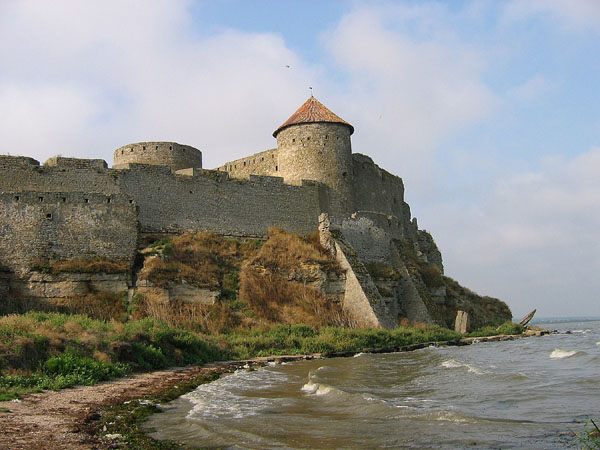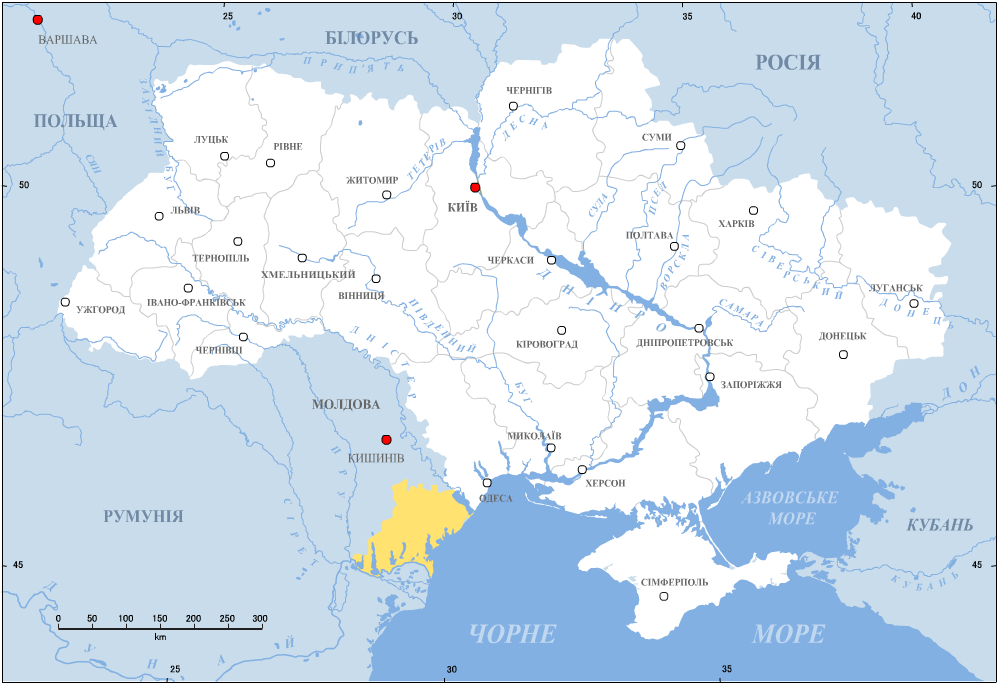|
Battle Of Vaslui
The Battle of Vaslui (also referred to as the Battle of Podul Înalt or the Battle of Racova) was fought on 10 January 1475, between Stephen III of Moldavia and the Ottoman governor of Rumelia, Hadım Suleiman Pasha. The battle took place at Podul Înalt (''the High Bridge''), near the town of Vaslui, in Moldavia (now part of eastern Romania). The Ottoman troops numbered up to 120,000, facing about 40,000 Moldavian troops, plus smaller numbers of allied and mercenary troops. Stephen inflicted a decisive defeat on the Ottomans, with casualties according to Venetian and Polish records reaching beyond 40,000 on the Ottoman side. Mara Branković (Mara Hatun), the former younger wife of Murad II, told a Venetian envoy that the invasion had been the worst ever defeat for the Ottomans.''Istoria lui Ştefan cel Mare'', p. 133 Stephen was later awarded the title "Athleta Christi" (''Champion of Christ'') by Pope Sixtus IV, who referred to him as ("the true defender of the Christian f ... [...More Info...] [...Related Items...] OR: [Wikipedia] [Google] [Baidu] |
Pope Sixtus IV
Pope Sixtus IV ( it, Sisto IV: 21 July 1414 – 12 August 1484), born Francesco della Rovere, was head of the Catholic Church and ruler of the Papal States from 9 August 1471 to his death in August 1484. His accomplishments as pope included the construction of the Sistine Chapel and the creation of the Vatican Library. A patron of the arts, he brought together the group of artists who ushered the Early Renaissance into Rome with the first masterpieces of the city's new artistic age. Sixtus founded the Spanish Inquisition through the bull ''Exigit sincerae devotionis affectus'' (1478), and he annulled the decrees of the Council of Constance. He was noted for his nepotism and was personally involved in the infamous Pazzi conspiracy. Early life Francesco was born to a family of modest means from Liguria, Italy, the son of Leonardo della Rovere and Luchina Monleoni. He was born in Celle Ligure, a town near Savona. As a young man, Della Rovere joined the Franciscan Order, ... [...More Info...] [...Related Items...] OR: [Wikipedia] [Google] [Baidu] |
Suceava
Suceava () is the largest urban settlement and the seat town ( ro, oraș reședință de județ) of Suceava County, situated in the historical region of Bukovina, northeastern Romania, and at the crossroads of Central Europe, Central and Eastern Europe. Klaus Peter BergerThe Creeping Codification of the New Lex Mercatoria Kluwer Law International, 2010, p. 132 During the late Middle Ages, namely between 1388 and 1564, this middle-sized town was the capital of the Moldavia, Principality of Moldavia. From 1775 to 1918, Suceava was controlled by the Habsburg monarchy, initially part of its Kingdom of Galicia and Lodomeria, then gradually becoming the third most populous urban settlement of the Duchy of Bukovina, a constituent land of the Austrian Empire and subsequently a crown land within the Cisleithania, Austrian part of Austria-Hungary. During this time, Suceava was an important, strategically-located commercial border town with the then Romanian Old Kingdom. Throughout the Aust ... [...More Info...] [...Related Items...] OR: [Wikipedia] [Google] [Baidu] |
Caffa
uk, Феодосія, Теодосія crh, Kefe , official_name = () , settlement_type= , image_skyline = THEODOSIA 01.jpg , imagesize = 250px , image_caption = Genoese fortress of Caffa , image_shield = Feodosiya coat of arms.svg , image_flag = Flag_of_feodosia.svg , coordinates = , pushpin_map = Crimea , pushpin_label_position= , pushpin_map_caption= Location of Feodosia within Crimea , subdivision_type = Country , subdivision_name = , subdivision_type1 = Republic , subdivision_name1 = , subdivision_type2 = Municipality , subdivision_name2 = Feodosia Municipality , timezone = MSK , utc_offset = +3 , timezone_DST= , utc_offset_DST= , elevation_m = 50 , population_total = 69145 , population_footnotes= , population_as_of = 2015 , postal_code_type = Postal codes , postal_code = 298100–298175 , area_code = +7-36562 , blank_info ... [...More Info...] [...Related Items...] OR: [Wikipedia] [Google] [Baidu] |
Bilhorod-Dnistrovskyi
Bilhorod-Dnistrovskyi ( uk, Бі́лгород-Дністро́вський, Bílhorod-Dnistróvskyy, ; ro, Cetatea Albă), historically known as Akkerman ( tr, Akkerman) or under different names, is a city, municipality and port situated on the right bank of the Dniester Liman (on the Dniester estuary leading to the Black Sea) in Odesa Oblast of southwestern Ukraine, in the historical region of Budjak. It also serves as the administrative center of Bilhorod-Dnistrovskyi Raion, one of seven districts of Odesa Oblast, and is the only locality which constitutes Bilhorod-Dnistrovskyi urban hromada, one of the hromadas of Ukraine. It is a location of a big freight seaport. Population: Nomenclature The city of Bilhorod-Dnistrovskyi is also referred to by alternative transliterations from Ukrainian as Bilhorod-Dnistrovsky or Bilhorod-Dnistrovskyy. ''Dnistrovsky'' was added to differentiate it from Bilhorod that was part of the Sloboda Ukraine and carried a similar name. ;Prev ... [...More Info...] [...Related Items...] OR: [Wikipedia] [Google] [Baidu] |
Kilia, Ukraine
Kiliia or Kilia ( uk, Кілія́, translit=Kiliia, ; ro, Chilia Nouă) is a town in Izmail Raion, Odesa Oblast of southwestern Ukraine. It hosts the administration of Kiliia urban hromada, one of the hromadas of Ukraine. Kiliia is located in the Danube Delta, in the Bessarabian historic district of Budjak; across the river lies the Romanian town of Chilia Veche (Old Kiliia). The Chilia branch of the Danube river, which separates Ukraine from Romania, is named after it. Population: History A town on the Romanian side of the Chilia branch of the Danube, now known as ''Chilia Veche'' ( uk, Cтapa Кілія, translit. ''Stara Kiliia'') or "Old Chilia", was founded by the Greek Byzantines – κελλία, ''kellia'' in Greek being the equivalent of "granaries", a name first recorded in 1241, in the works of the Persian chronicler Rashid-al-Din Hamadani. Kiliia is therefore sometimes referred to as ''Nova Kiliia'' meaning "New Kiliia". In the place that is now Kiliia, a large ... [...More Info...] [...Related Items...] OR: [Wikipedia] [Google] [Baidu] |
Alexandru Cel Bun
Alexander the Good ( ro, Alexandru cel Bun or ''Alexandru I Mușat''; c. 1375 – 1 January 1432) was a Voivode (Lord) of Moldavia, reigning between 1400 and 1432, son of Roman I Mușat. He succeeded Iuga to the throne, and, as a ruler, initiated a series of reforms while consolidating the status of the Moldavian Principality. Internal politics Alexander expanded the bureaucratic system by creating the "Council of the Voivode", the Chancellory and by adding (in 1403) the institution of ''Logofăt'' – Chancellor of the official Chancellery. During his reign, he introduced new fiscal laws by adding commercial privileges to the traders of Lviv (1408) and Kraków (1409), improved the situation of trading routes (especially the one linking the port of Cetatea Albă to Poland), strengthened the forts by guarding them and expanded the Moldavian ports of Cetatea Albă and Chilia. He also had a role in ending the conflict of the Moldavian Eastern Orthodox with the Patriarch o ... [...More Info...] [...Related Items...] OR: [Wikipedia] [Google] [Baidu] |
Roman I Of Moldavia
Roman I (? – March 1394) was Voivode of Moldavia from December 1391 to March 1394. He was the second son of Costea and Margareta Muşata (= "the beautiful" in Old Romanian) the daughter of the first ruler of Moldavia, Bogdan I and the founder Muşatin family. During his reign, Moldova incorporated all the territories between the Carpathians and Dniester, Roman I becoming the first Moldavian ruler to call himself "voivode from the arpathianmountains to the Black_Sea.html"_;"title="Black_Sea">Black_Sea_shore"_or_"Prince_of_Moldavia,_from_the_Carpathian_Mountains_to_the_Sea."_The_important_fortress_of_Bilhorod-Dnistrovskyi.html" "title="Black_Sea">Black_Sea_.html" ;"title="Black_Sea.html" ;"title="Black Sea">Black Sea ">Black_Sea.html" ;"title="Black Sea">Black Sea shore" or "Prince of Moldavia, from the Carpathian Mountains to the Sea." The important fortress of Bilhorod-Dnistrovskyi">Cetatea Albă also came under Moldavian rule during this period. Like the previous Moldavia ... [...More Info...] [...Related Items...] OR: [Wikipedia] [Google] [Baidu] |
Petru II Of Moldavia
Petru (Peter) Mușat (d. 1391) was Voivode (prince) of Moldavia from 1375 to 1391, the maternal grandson of Bogdan I, the first ruler from the dynastic House of Bogdan, succeeding Lațcu, Bogdan's son and successor who converted to Catholicism. According to one significant hypothesis, he may have been the first voivode of Moldavia under this regnal name, and should be referred to as Petru I of Moldavia. After 2000, Romanian historian Constantin Rezachevici proposed a novel timeline of Moldavian rulers, according to which Petru Mușat would be referred as Petru II. Family He was married twice. From his first wife he had a son, Roman. In 1388 he remarried to Olga, daughter of Janusz I, Prince of Masovia. From his second wife he had another son, Ivașcu. Reign During his reign, he maintained good relationships with the king of Poland, Władysław II Jagiełło. On 27 September 1387 at Lwów, he paid homage to the Polish king, making Moldavia a Polish fief (which it remai ... [...More Info...] [...Related Items...] OR: [Wikipedia] [Google] [Baidu] |
Wallachia
Wallachia or Walachia (; ro, Țara Românească, lit=The Romanian Land' or 'The Romanian Country, ; archaic: ', Romanian Cyrillic alphabet: ) is a historical and geographical region of Romania. It is situated north of the Lower Danube and south of the Southern Carpathians. Wallachia is traditionally divided into two sections, Muntenia (Greater Wallachia) and Oltenia (Lesser Wallachia). Dobruja could sometimes be considered a third section due to its proximity and Dobruja#Wallachian rule, brief rule over it. Wallachia as a whole is sometimes referred to as Muntenia through identification with the larger of the two traditional sections. Wallachia was founded as a principality in the early 14th century by Basarab I of Wallachia, Basarab I after a rebellion against Charles I of Hungary, although the first mention of the territory of Wallachia west of the river Olt River, Olt dates to a charter given to the voivode Seneslau in 1246 by Béla IV of Hungary. In 1417, Wallachia was fo ... [...More Info...] [...Related Items...] OR: [Wikipedia] [Google] [Baidu] |
Budjak
Budjak or Budzhak (Bulgarian and Ukrainian: Буджак; ro, Bugeac; Gagauz and Turkish: ''Bucak''), historically part of Bessarabia until 1812, is a historical region in Ukraine and Moldova. Lying along the Black Sea between the Danube and Dniester rivers, this sparsely populated multi-ethnic 600,000-people region of is located in the southern part of historical Bessarabia. Nowadays, the larger part of the region is included in Ukraine's Odesa Oblast, while the rest is included in the southern districts of Moldova. The region is bordered to the north by the rest of Moldova, to the west and south by Romania, and to the east by the Black Sea and the rest of Ukraine. Name and geography Historically, Budjak was the southeastern steppe region of Moldavia. Bordered by the northern Trajan's Wall at its north end, by the Danube river and Black Sea to its south, by Tigheci Hills (just east of the Prut River) to the west, and Dniester River to the east, it was known as ''histori ... [...More Info...] [...Related Items...] OR: [Wikipedia] [Google] [Baidu] |
Mehmed II
Mehmed II ( ota, محمد ثانى, translit=Meḥmed-i s̱ānī; tr, II. Mehmed, ; 30 March 14323 May 1481), commonly known as Mehmed the Conqueror ( ota, ابو الفتح, Ebū'l-fetḥ, lit=the Father of Conquest, links=no; tr, Fâtih Sultan Mehmed, links=no), was an Ottoman sultan who ruled from August 1444 to September 1446, and then later from February 1451 to May 1481. In Mehmed II's first reign, he defeated the crusade led by John Hunyadi after the Hungarian incursions into his country broke the conditions of the truce Peace of Szeged. When Mehmed II ascended the throne again in 1451, he strengthened the Ottoman navy and made preparations to attack Constantinople. At the age of 21, he Fall of Constantinople, conquered Constantinople (modern-day Istanbul) and brought an end to the Byzantine Empire. After the conquest Mehmed claimed the title Caesar (title), Caesar of the Roman Empire ( ota, قیصر روم, Qayser-i Rûm, links=no), based on the fact that Constanti ... [...More Info...] [...Related Items...] OR: [Wikipedia] [Google] [Baidu] |






